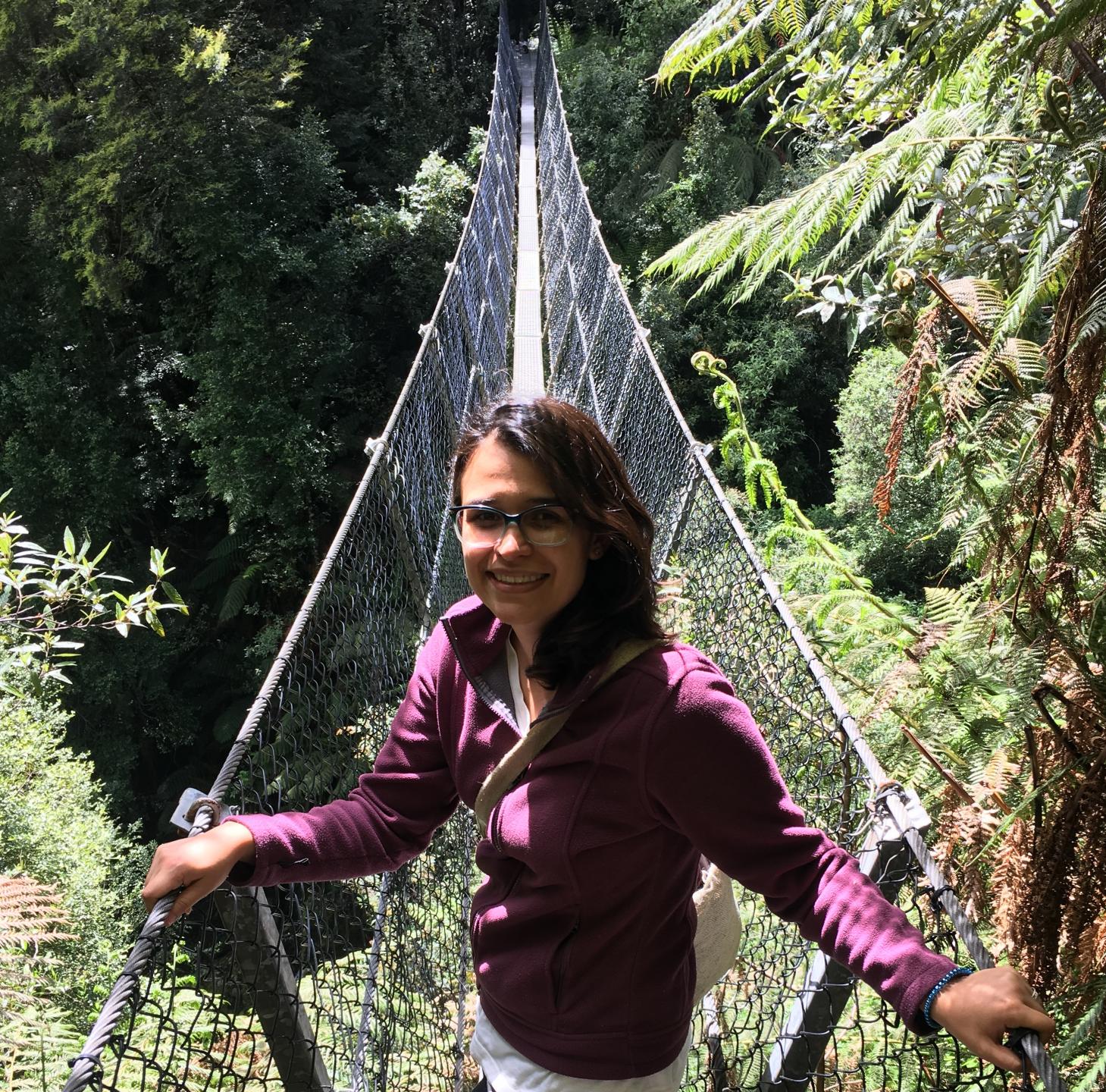
(She/Her)
🎙 Tell us about yourself?
I am originally from Colombia, where I obtained a double Bachelor’s degree in Microbiology and Ecology (Hons). As part of my Honours degrees, I worked in an ecological restoration project, assessing the recovery of soil properties after disturbance. I was also involved in a research project aiming to understand the impact of a Hurricane on the biogeochemical processes in a tropical dry forest in Western Mexico. I later moved to Australia where I did my PhD at the Hawkesbury Institute for the Environment. For my PhD, I measured the impacts of elevated atmospheric carbon dioxide (CO2), on microbially-mediated soil organic matter dynamics at the first free air CO2 enrichment experiment (FACE) located in a natural, mature Eucalyptus woodland. I also researched the role of symbiotic fungi in soil carbon sequestration in agricultural and forest ecosystems and their potential as a climate change mitigation strategy. I am currently working as a Postdoctoral Fellow in Myrna Simpson’s lab, at the University of Toronto, Scarborough.
🎙 What are your research interests & what are you currently researching?
My research interests focus mainly on the mechanisms for soil carbon (C) losses and soil organic matter (SOM) formation and stabilization, the role of soil microbial communities on soil C dynamics and the impact of anthropogenic stressors on soil C stocks across different ecosystems.
Currently, I am investigating long-term impacts of litter depositional changes on SOM dynamics and the role of soil microbial communities driving the response of forest soil C stocks. For this, I am working with samples from the Detrital Input and Removal Treatment (DIRT) network, that has several long-term experimental forest sites in the northern hemisphere.
🎙 What is the significance of your current research?
My current research projects will help us understand the biochemical and microbial mechanisms by which forest ecosystems will adapt to future climate and environmental conditions. It will also help us to comprehend the long-term responses for soil organic matter dynamics in forests and how climate change stressors may affect their capacity to provide a key ecological service as it is soil C storage. This research is highly relevant as forests play a key role regulating Earth’s climate via their C storage capacity but there is still a lot to learn about the processes that govern this ecosystem function and how these processes are evidenced across broad spatial scales.
🎙 Any interesting insights/results so far related to your research?
One surprising trend that has been observed in DIRT forest sites, is the lack of soil C accumulation despite doubled C inputs in the form of leaf litter after 20 years of manipulations. We also observed this trend in a forest I’m currently working on, after 30 years of DIRT. This is unexpected as increased C inputs are generally anticipated to lead to increases in soil C. However, the lack of soil C accumulation is consistent across different temperate forests with the difference that mechanisms for this lack of soil C accumulation are inherent to each forest, their nutrient status and their dominant microbial communities. Moreover, we have also observed that litter and thus C input reductions also lead to soil C losses, as soil microbial communities adapt to substrate limitation. Thus, this research is showing that both litter additions and reductions influence the capacity of temperate forests to sequester soil C in the long term.
🎙 What aspirations do you have for your research? How do you see it being utilized?
As climate change stressors and their impact on Earth’s ecosystems intensify, the search for nature-based solutions focused on sustaining forests productivity and their ecosystem services will also increase. I think this research will inform practitioners and managers about possible avenues for forest soil C management, its inherent challenges and unexpected outcomes that are strongly coupled with factors such as initial soil C stocks, soil microbial communities and soil nutrient availability. The challenge of adapting to the coming climatic conditions while enhancing soil C sequestration is not a simple task. Yet, science-based decisions will help us preserve the functionality of Earth’s forests and the ecological services upon which we all depend on.